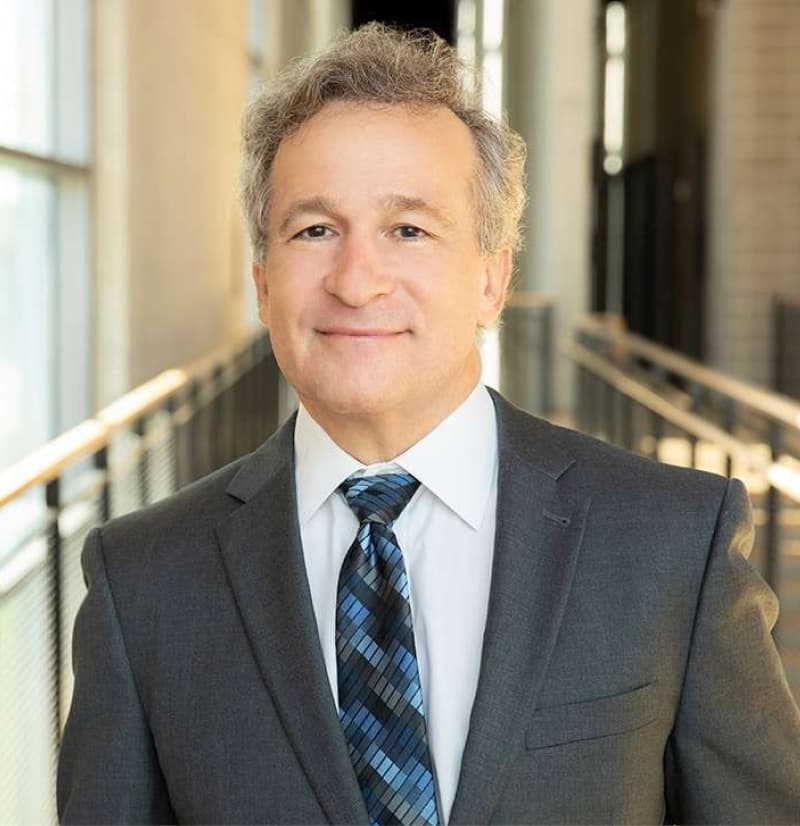Cataract surgeries are miracles of the modern age. They are generally safe. And effective.
Before the advent of intraocular lenses, when cataracts were removed, nothing replaced them. The only solution was to follow with “high-powered, bulky spectacles, which often led to poor visual quality. In fact, Sir Harold Ridley exclaimed that “extraction alone is but half the cure for cataract.”
A British ophthalmologist was credited with figuring out how to solve this problem.
During World War II, Dr. Ridley observed that one of the Royal Airforce pilots had sustained shrapnel ocular trauma from plastic and despite having a foreign body, remained largely asymptomatic for years. This inspired a collaboration with the Plastics Division of Imperial Chemical Industries to develop the first IOL made of polymethylmethacrylate (PMMA), mainly used in airplanes at that time. In 1949 Dr. Ridley was credited to perform the first intraocular lens (IOL) operation at St. Thomas’ Hospital in London. His work was met with disdain as this was a revolutionary idea of inserting a foreign object inside the eye. Further criticism stemmed from complications such as glaucoma, inflammation, inability to individualize the refractive strength of the IOL, and frequent dislocation of the IOL. Dr. Ridley admits that further work was necessary to address many of the complications, but his innovative work paved the way for modern advancements in IOL and cataract surgery.
In 1978, Kai-yi Zhou implanted the first foldable IOL made of silicone. Some of the benefits of the foldable IOL [were] easier implantation and a small incision, resulting in less induced astigmatism, faster healing and fewer infections.
The conglomeration of foldable IOL, use of topical anesthetics in 1993 by Fischman, and the introduction of phacoemulsification in 1967 by Dr. Charles Kelman allowed for the modern extraction of cataracts to be effective and safer. Phacoemulsification uses ultrasound to break up the cataract and then subsequently the cataract is aspirated from the eye. This development allowed surgeons to decrease the incision in the eye from 10mm to typically less than 3mm, which has the benefits of shorter recovery times, more stable surgery, and lower complication rate. In modern surgery, small incisions ranging from 1-3.0mm are made, the anterior lens capsule is opened in a usually curvilinear fashion (capsulorrhexis) and then lens is hydrodissected to loosen adherence to the capsule. Micro-instruments are used to help divide the lens into fragments and phacoemulsification is to break up and aspirate the cataract. An IOL, often foldable, is then inserted into the remaining lens capsule if possible.
Interestingly, Sir Harold Ridley did not profit from his invention of the intraocular lens for cataract surgery. He and his associates agreed not to patent the invention, and they did not seek to profit financially from its widespread use. His primary motivation was to improve patient outcomes, and millions have benefited from his work.
Ridley’s path was not an easy one.
At the Oxford Ophthalmological Conference on 9 October 1951, Ridley took along two people who had successfully undergone the lens implantation and a film of the operations. His talk received mixed reactions and the film was never shown. Whether professional rivalry or horror to the idea of replacing body parts, even as small as a lens, saw the beginning of decades of hostility towards Harold Ridley and his supporters.
Ridley implanted around 1,000 lenses but over time up to 20% of these had to be removed due to complications, including the lens moving out of position, clouding of the lens or infection. Reports of worldwide problems due to poor quality lenses and poor surgical procedures only worsened the problem. The surgery was also complicated due to the tools of the time, with no operating microscopes available or microsurgical tools.
Ridley passed away on 25 May 2001. Many of his obituaries credit him as the inventor of the intra-ocular lens, and yet few acknowledge the 30 years it took for it to become an accepted part of medical and surgical practice.
Today, ophthalmologists around the world routinely perform this life-altering procedure.
Complications are rare.
Unless the surgical team is playing Music Bingo.
A now-settled lawsuit alleges a surgeon and anesthesiologist played a music bingo game during a routine eye surgery, which caused them to miss critical signs that their patient was no longer breathing.
Bart Writer, 56, never regained consciousness and died shortly after he was transferred from an operating room inside InSight Surgery Center in Lone Tree in 2023.
It had become routine, according to court documents and deposition transcripts, for Drs. Johnson and Urban to listen to music during the surgeries.
The bingo game, according to court records and deposition transcripts, involved Drs. Urban and Johnson playing mostly ’70s and ’80s music and attempting to tie the bands involved to “B” “I” “N” “G” and “O.”
“So, as an example, if the ’70s group the Bee Gees were to sing a song, that would be the letter ‘B,’” said Urban during a deposition in the lawsuit against Johnson.
“Were you the one keeping score on Feb. 3, 2023?” asked an attorney.
“I believe so,” replied Urban.
“When did the game get started?” asked the attorney.
“I’m not even sure. It had been going on for a few years, I believe,” said Urban.
The problem, as outlined in the lawsuit against Johnson, is that, at least during the Writer surgery, the audible alarms had been turned down or off.
“The machine allowed for that to happen,” said Chris Writer.
Johnson settled the case for an undisclosed amount. In a statement to 9NEWS Investigates, his attorney said:
“Dr. Johnson relies on the anesthesiologist to provide the proper dose and type of anesthesia, to properly monitor the patient’s condition, and to communicate all relevant information to the surgeon including if they have elected, for whatever reason, to silence the audible alarms. During the cataract surgery, Dr. Johnson is looking through a microscope for the entire procedure. Therefore, he must rely on the surgical team for many aspects of surgical care. For example, a surgeon has a responsibility to perform surgery in a sterile environment and must rely on the surgical scrub technician to provide him with uncontaminated instruments. Dr Johnson has performed over 25,000 cataract surgeries, 8,000 of them with Dr. Urban. Nothing in Dr Johnson’s experience would explain, justify or have predicted Dr Urban’s decisions on that day.”…
An attorney for Urban told 9NEWS, “Dr. Urban stands by his care and treatment of Mr. Writer and disagrees with the surgeon’s characterizations of the events of that day, which we understand are in the context of contentious litigation. He is nonetheless very sympathetic towards Ms. Writer and her loss.”
Thousands of operating rooms have music playing in the background. But you can’t take your eye off the patient. If you do, you’ll potentially be blindsided by an avoidable catastrophe.
What do you think?





Is Urban named in the suit? I can’t imagine a universe in which he wouldn’t have been. It’s not easy to imagine one in which he didn’t get dinged either. Did he?
Thank you for the history of cataract surgery. When a procedure becomes so routine, safe, and easy one can and may become bored. To focus on anything but the patient and the surgery is an egregious lapse of judgment. Even after performing thousands of these procedures one can’t imagine the potential for a catastrophic event until it happens. Studies show that the concept of multitasking is flawed and one rarely completes two or more tasks as completely or competently as a single focused objective. Background music or dialogue can not become more important than the procedure.
My wife and I recognized the issue of my listening to classical music while doing something important that requires my concentration.
I was raised playing Beethoven since I was 8. As a teen, I could play all 5 Beethoven piano concertos. I don’t say this in self aggrandizement. It is shocking to realize that there are thousands of amateur pianists who can also do this. I see them playing on YOUTUBE videos all the time. Some are better than I am.
My point is that I go into an analytical trance when hearing them. I can actually “see” them as I hear them. This is not unusual for musicians.
But when I am doing otherwise important things, I cannot listen to it. I never played any classical music when I was working on patients. Same with driving.
Michael M. Rosenblatt, DPM
Should have something along the lines the ‘sterile cockpit rule’ in place during surgery.
The Sterile Cockpit Rule is a FAA safety regulation that requires pilots to avoid all non-essential conversation, activities, and distractions during critical phases of flight.
When it applies :Taxi, Takeoff, Landing, Any flight operation below 10,000 feet (except cruise if the aircraft cruises below 10,000)
What is not allowed during sterile cockpit
During those phases, pilots may not: Chat casually, Discuss unrelated topics, Eat meals or handle food, Look at paperwork not directly related to the flight. Make jokes, tell stories, etc.
What is allowed: Only communication and activity directly related to operating the aircraft. Air traffic control coordination, Checklist callouts, Engine and system monitoring, Crew coordination and safety instructions
U.S. FAA Regulation: 14 CFR 121.542 – Initially implemented after crash investigations showed that cockpit distraction during landing/takeoff was a contributing factor in several accidents (notably Eastern Air Lines Flight 212, 1974).
MAC without an audible, or visible pulseoximeter reading is a recipe for disaster, especially when the surgeon is seated at the head, obscuring the airway. Anesthesia took his eye off the only ball he needed to watch. Playing musical bingo, I think, is relatively irrelevant. That said, I no longer listen to any music in the operating room, for over 10 years now. Without tunes, my operations are performed faster, and I believe this is due to the lack of that particular distraction.
I agree with Dr. Biggs to a point.
Longer stable cases, where the music is not disturbing should be okay.
Playing games during cases of any kind in surgery violates the sterile cockpit rule.
Decades ago, when political discussions entered the OR, it was realized it was a mistake and stopped.
Faster music for slow surgeons, and slower music for fast surgeons keep the mode stable in the OR and resulted in better results for all.